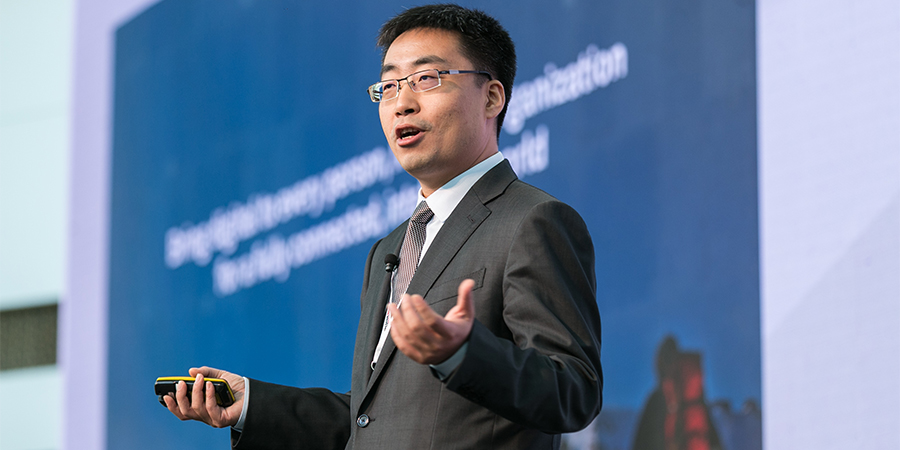By An Jian, President of Carrier Network Business Group, Huawei Middle East
In recent years, carriers in the Middle East have launched ambitious digital transformation strategies. These are largely in line with national digitization agendas, such as the UAE Digital Government Strategy 2025 and programs within Saudi Arabia’s Vision 2030.
Large-scale 5G construction is an important part of this digital transformation. However, within 5G network development, carriers often face challenges such as high energy consumption in a growing number of 5G sites, as well as greater network management complexity. According to our studies, the energy consumption of each 5G site has increased by around 30%-40% on average compared with that of a 4G site. Furthermore, today 2G, 3G, 4G, and 5G devices often coexist on a carrier’s network, making it increasingly complex. As a result, it is difficult to demarcate and locate problems, and the 5G fault handling duration has been doubled. After the 2020 Paris Agreement was reached, carbon neutrality in particular has become one of the most important metrics for countries and businesses.
As a result, achieving network evolution at low OPEX while reaching carbon-peak and neutrality targets has become a vital strategic objective for Middle East carriers in the 5G era. We at Huawei have identified a number of strategies to help carriers on this transformation journey.
Leveraging the NOHI (Network OPEX Healthy Index) insight model to build an OPEX consulting system
The reality is that OPEX reduction is not a single-point issue. It requires systematic insight, analysis, and implementation. Traditional carrier networks mainly rely on third-party consulting firms to gain insights into OPEX. However, consulting firms may not have a deep enough understanding of a carrier’s network. Their pain points can thus include inaccurate data insights, time-consuming OPEX composition analysis, and incorrect value evaluation.
Often, the biggest challenge in reducing OPEX is to accurately identify live network issues. The NOHI model classifies carrier network OPEX into seven categories – electricity, air conditioning, fuel, FLM (First Line Maintenance), NOC (network operations center), NPM (network performance management), and rent. It has identified 14 key factors that affect network OPEX and has developed benchmarks applicable to the Middle East to gain refined insights into OPEX. Compared with traditional insight methods, this innovative approach increases insight accuracy by 50%–80%, shortens the analysis period from 20 days to three days, and controls the evaluation error to below 5%.
Instead of using traditional manual methods such as forms and Excel sheets, Huawei uses a digital management solution based on the PowerStar + NetEco digital platform. The solution can perform a detailed evaluation of site energy consumption and display indicators such as a carbon emission intensity index, site clean energy index, site energy efficiency index, and a device energy efficiency index. The solution provides an overview of the energy consumption baseline of each equipment room and site, helping carriers implement refined management strategies for carbon neutrality or energy-saving and emissions reduction.
Providing green, simplified, and digital solutions to help carriers deploy 5G
In addition to the model, we have also looked specifically as how to best deploy 5G without extra energy consumption. Today, carriers in the region have access to innovative solutions to aid in this endeavor.
The Huawei PowerStar Platform, for example, identifies 30% more cells for energy saving with MR-based inter-site coverage identification. In addition, the AI-enabled dynamic network energy saving algorithm achieves an optimal balance between energy-saving and user experience, helping carriers improve site energy efficiency without compromising KPIs. Moreover, new types of technologies are used to modernize sites that use diesel gensets. Green power solutions such as wind and solar power are adopted to help carriers reduce the number of outdoor and genset-involved sites by 20%, and deploy 5G without consuming extra power.
By simplifying networks, 5G can be deployed without extra rents or frequency spectra. Now, one cabinet can house 2G/3G/4G/5G devices at one site, facilitating site acquisition and reducing rent. Indoor sites can be changed to outdoor sites, negating the need to rent equipment rooms and auxiliary facilities. Antenna rent is reduced as existing 2G, 3G, and 4G antennas are easily incorporated as 5G frequency bands are added without increasing the rent. In addition, 2G/3G users on carrier networks consist of 2G voice users and low-speed terminals such as POS machines, resulting in low user value and high OPEX. A number of breakpoints in business, networks, and operations hinder 2G/3G network exits. To address this challenge, carriers can now leverage a series of advanced solutions to implement step-by-step 2G/3G network exit and reduce OPEX.
Moreover, digitalization should add intelligence to 5G infrastructure to reduce OPEX. Huawei has launched the ADN (autonomous driving network) and GDE (General Digital Engine) intelligence platform to help carriers achieve cloud-network synergy and reduce OPEX in the 5G era. An AI-based digital platform system is built with N+, C+, and M+ to help carriers deploy online services and implement digital and intelligent O&M.
Reducing OPEX and achieving carbon neutrality means that carriers need to innovate and explore target networks from multiple dimensions, including planning, construction, maintenance, optimization, and operation. In the end, carriers in the Middle East will find that the Huawei OPEX SAVING series provides an end-to-end business solution ranging from consulting insights and solution adaptation to value closure. These solutions are accurate, efficient, and comprehensive, helping carriers to improve their business while better fulfilling their social responsibilities. Huawei will continue to deepen its research in OPEX saving and collaborate with carriers in network construction, operation, and optimization, helping carriers to build target networks at the lowest OPEX to promote the healthy development of the telecom industry.
